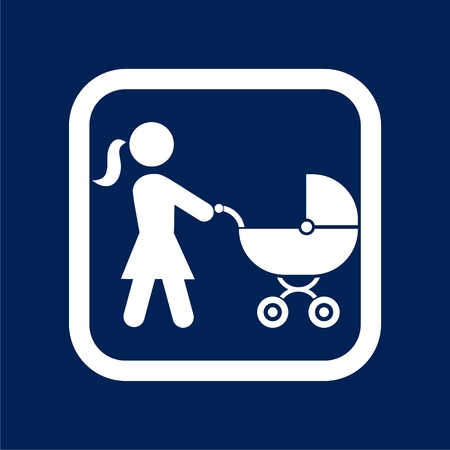Understanding the Benefits of a Junior ISA
When it comes to planning for your child’s future, every parent wants to give their little one the best possible start in life. One of the most effective ways UK families can help build a secure foundation is by opening a Junior Individual Savings Account (Junior ISA). But what exactly makes a Junior ISA such a smart choice? At its heart, this account offers tax-free savings and long-term growth potential—two key ingredients for nurturing your child’s financial wellbeing as they grow.
Why Choose a Junior ISA?
Unlike traditional savings accounts, a Junior ISA allows you to set aside money for your child without the worry of tax eating into their returns. All interest, dividends, and capital gains earned within the account are entirely free from income and capital gains tax. This means every penny saved works harder for your child’s future goals—whether that’s funding university studies, travelling, or buying their first car.
Tax-Free Savings at a Glance
| Feature | Junior ISA | Regular Children’s Savings Account |
|---|---|---|
| Tax on Interest/Gains | No | Yes (after certain thresholds) |
| Annual Contribution Limit (2024/25) | £9,000 | Varies (usually lower) |
| Access Age | 18 years old | Varies |
The Power of Long-Term Growth
Because funds in a Junior ISA are locked away until your child turns 18, there’s an ideal opportunity for investments to grow over time. Whether you opt for a Cash Junior ISA or Stocks & Shares Junior ISA, starting early harnesses the magic of compound interest—a powerful motivator to involve children in family money conversations and encourage positive attitudes toward saving from a young age.
Building Healthy Financial Habits Together
By making regular contributions—even small ones—you’re not just growing a nest egg; you’re also modelling healthy financial behaviours. Over time, children see how steady saving leads to bigger outcomes. Involving them in tracking the account’s progress can spark curiosity about money management, fostering confidence and resilience as they move towards adulthood.
2. Types of Junior ISAs: Cash vs. Stocks & Shares
When considering a Junior ISA for your child, it’s important to understand the two main types available in the UK: Cash Junior ISAs and Stocks & Shares Junior ISAs. Each option has unique features, benefits, and considerations that may better suit your family’s financial values and your child’s future aspirations.
Understanding Cash Junior ISAs
A Cash Junior ISA is similar to a traditional savings account but with tax-free growth. Money saved here will not be subject to income or capital gains tax, making it a safe place for families who prefer stability over risk. The interest rates can vary between providers, so it’s wise to shop around for the best deal. This type of ISA can be ideal if you want peace of mind, knowing your child’s savings are protected by the Financial Services Compensation Scheme (FSCS) up to £85,000 per provider.
Exploring Stocks & Shares Junior ISAs
Stocks & Shares Junior ISAs allow you to invest in a range of assets including shares, bonds, and investment funds. While returns are not guaranteed and investments can go down as well as up, this option offers greater potential for growth over the long term compared to cash savings. It’s suitable for parents who are comfortable with some level of risk and are looking at building a more substantial fund for their child’s future goals—whether that’s university, travel, or even buying their first home.
Cash vs. Stocks & Shares Junior ISAs at a Glance
| Feature | Cash Junior ISA | Stocks & Shares Junior ISA |
|---|---|---|
| Risk Level | Low (capital protected) | Medium to High (investment value can fluctuate) |
| Payout Growth | Interest-based (typically lower returns) | Potentially higher returns over time, but not guaranteed |
| Access to Funds | No access until age 18 | No access until age 18 |
| Best For Families Who… | Prioritise security and predictability; want guaranteed growth | Are comfortable with risk; want to maximise long-term potential |
| FSCS Protection | Yes (up to £85,000 per provider) | No (investments can go up or down in value) |
Which Type Aligns With Your Family Values?
The right choice often comes down to your family’s attitude towards risk and your hopes for your child’s future. If you value steady progress and minimal exposure to market fluctuations, a Cash Junior ISA may be your best bet. However, if you see financial education as an opportunity for your child to learn about investment and growth—and you’re open to short-term ups and downs—a Stocks & Shares Junior ISA could inspire ambition and resilience. Reflect together as a family on what feels most supportive for your child’s dreams and wellbeing before making a decision.

3. Eligibility and How to Apply
Understanding who can open a Junior ISA (JISA) and how to apply is crucial for UK parents and carers aiming to build a strong financial foundation for their children. This section guides you through the eligibility requirements, essential documents, and step-by-step application process.
Who Can Open a Junior ISA?
| Eligibility Criteria | Details |
|---|---|
| Child’s Age | Under 18 years old and resident in the UK |
| Child’s Residency Status | Must be living in the UK or be a dependent of a Crown servant abroad |
| Parent/Carer Role | A parent or legal guardian must open the account on behalf of the child (unless the child is 16 or over) |
| One JISA Rule | A child can have one Cash JISA and one Stocks & Shares JISA at any time |
Documents Required to Apply for a Junior ISA
- Your child’s birth certificate or passport (to confirm identity and age)
- Proof of your own identity (such as passport, driving licence, or utility bill)
- Proof of address for both you and your child (recent utility bill, bank statement, etc.)
- Your National Insurance Number (for certain providers)
- Completed application form from your chosen provider (online or paper-based)
The Step-by-Step Application Process
- Choose Your Provider: Research banks, building societies, and investment platforms that offer Junior ISAs. Compare their interest rates, fees, and features.
- Select Account Type: Decide between a Cash JISA, Stocks & Shares JISA, or both. Remember, each child can have only one of each type at any time.
- Gather Documents: Prepare all required documents listed above to ensure a smooth application process.
- Complete Application: Fill in the application form—most providers allow you to do this online for convenience.
- Verification Process: The provider will verify your documents and details. They may contact you if they need more information.
- Initial Deposit: Make your first deposit according to your provider’s instructions. There is no minimum deposit requirement for many accounts, but check with your chosen provider.
- Account Confirmation: Once everything is processed, you will receive confirmation of your new Junior ISA along with account details. You can now begin contributing regularly.
Tips for Parents and Carers
- If your child is aged 16 or over, they can open a Cash Junior ISA themselves—but only you as parent/carer can open a Stocks & Shares JISA until they turn 18.
- If your family moves abroad temporarily as Crown servants, your child remains eligible for a JISA.
- You don’t need to transfer an existing Child Trust Fund (CTF) to open a new JISA, but you can choose to do so for better rates or flexibility.
Nurture Financial Skills Early On
This simple step-by-step approach not only sets up a secure savings route but also opens doors for meaningful conversations about money with your child. Including them in the process—even just showing them how their savings grow—can nurture confidence and healthy financial habits from an early age.
4. Contributing and Managing the Junior ISA
Once your child’s Junior ISA is up and running, it’s important to understand how to maximise its potential through regular contributions and smart management. Below, we’ll guide you through annual contribution limits, practical ways to make deposits, creative ideas for involving grandparents, and nurturing healthy money habits in your child—setting the foundation for a secure financial future.
Annual Contribution Limits
The UK government sets an annual limit on how much can be paid into a Junior ISA each tax year. For the 2023/24 tax year, this stands at £9,000. All contributions, whether from parents, grandparents, or friends, count towards this limit. It’s worth noting that any unused allowance does not roll over to the next year, so making the most of each year’s limit is key.
| Tax Year | Contribution Limit (£) |
|---|---|
| 2022/23 | £9,000 |
| 2023/24 | £9,000 |
How to Make Contributions
You can contribute to your child’s Junior ISA through bank transfers, standing orders for regular payments, or by cheque (for some providers). Many UK providers offer online platforms or mobile apps for easy account management. If you wish to encourage consistency, setting up a monthly standing order is both convenient and effective.
Involving Grandparents and Other Family Members
Grandparents often love to help build a nest egg for their grandchildren. One lovely British tradition is inviting family members to contribute to the Junior ISA as birthday or Christmas presents instead of toys or clothes. You might even set up a family group chat or an annual “ISA Day” where relatives can discuss and arrange their contributions together—a great way to reinforce family bonds and shared responsibility.
| Contributor | Ways to Give | Tips for Involvement |
|---|---|---|
| Parents | Monthly standing order Lump sum payments |
Set reminders before tax year ends Discuss goals as a couple |
| Grandparents | Bank transfer Cheques Gift on special occasions |
Create annual giving traditions Share progress updates with them |
| Family Friends | One-off payments Group gift contributions |
Coordinate for milestones like birthdays Send thank-you notes from your child |
Nurturing Positive Money Habits Early On
The real magic of a Junior ISA isn’t just in the savings—it’s in the lifelong lessons about money it can help teach. From an early age, involve your child by showing them statements or explaining how their savings grow. As they get older, you could let them help track contributions and watch their investment rise and fall with the markets—turning financial learning into a family activity. This hands-on approach encourages children to value saving, set goals, and develop a healthy relationship with money—skills that will serve them well throughout life.
5. Helping Your Child Understand and Engage
Building a Junior ISA is not just about saving money—it’s a golden opportunity to nurture your child’s financial confidence from an early age. In the UK, fostering open conversations about money, savings, and future planning is essential for helping children grow into financially responsible adults. Here’s how you can use the Junior ISA as a springboard for these important life lessons.
Start the Conversation Early
Children are naturally curious, so introducing the idea of saving through their own Junior ISA can feel exciting and empowering. Explain in simple terms how the Junior ISA works: it’s like a special pot where money grows over time, just for them. Use age-appropriate language and real-life examples—perhaps relating saving to something they want, like a new bike or a holiday treat. This helps demystify financial concepts and makes learning relatable.
Key Talking Points by Age Group
| Age Group | Conversation Focus | Practical Activity |
|---|---|---|
| Under 7 | What is saving? Simple explanation of putting money aside for later. | Count coins together; create a savings jar labelled “ISA”. |
| 7-11 | Why save? The benefits of patience and waiting for something bigger. | Track ISA statements together; compare with their piggy bank growth. |
| 12-16 | The basics of interest and investment. How money can grow on its own. | Read quarterly statements; discuss goals for when they turn 18. |
| 16-18 | Long-term planning and responsibility. Preparing for adulthood. | Create a simple budget together; research future expenses like university or first car. |
Nurturing Healthy Money Habits
The Junior ISA provides a practical context to discuss budgeting, needs versus wants, and delayed gratification—a skill that will serve your child well beyond their teenage years. Encourage your child to contribute birthday money or small earnings to their ISA, reinforcing the concept that little amounts add up over time. Celebrate milestones together, such as reaching a savings goal or understanding their annual statement.
Making It Part of Everyday Family Life
- Family Savings Goals: Set collective objectives—like saving for a family day out—alongside individual ISA goals to foster teamwork and shared responsibility.
- Praise Effort: Recognise consistency rather than focusing solely on large deposits. This builds confidence and intrinsic motivation.
- Real-Life Applications: Relate saving to UK cultural moments—like discussing how people save for Christmas or school holidays—to make the process meaningful within your child’s world.
Your Role as a Parent Guide
Your involvement is key: by being open about your own experiences with money—the wins and even the mistakes—you show your child that learning about finances is a journey. Together, you can create an environment where questions are welcomed and mistakes are seen as opportunities for growth. Ultimately, setting up a Junior ISA is more than a legal or financial step; it’s an invitation to ongoing parent-child dialogue that cultivates self-awareness, resilience, and confidence in facing the future.
6. Withdrawing Funds: What Happens at Age 18
As your child approaches their 18th birthday, the Junior ISA (JISA) you’ve been nurturing together transitions into a powerful tool for their adult life. Understanding what happens next is key to guiding your child through this significant milestone, ensuring they feel confident and responsible as they gain access to their savings.
The Transition: What Changes at 18?
On your child’s 18th birthday, their Junior ISA automatically converts into an adult ISA. This means your child now has full legal control over the account and can decide whether to keep the funds invested or make withdrawals. It’s a moment that blends both excitement and responsibility—a real step into adulthood.
Withdrawal Process: Step-by-Step
| Step | Action | Who Is Responsible? |
|---|---|---|
| 1 | Junior ISA converts to Adult ISA on 18th birthday | Automatic by provider |
| 2 | Your child receives notification and login details | ISA Provider & Your Child |
| 3 | Your child decides whether to withdraw, transfer, or leave funds invested | Your Child |
| 4 | Withdrawals can be made via online banking or by contacting the provider | Your Child (with guidance if needed) |
| 5 | Funds are paid directly to your childs bank account upon request | Your Child/Provider |
What Are Their Options?
- Keep Saving: Your child can continue contributing up to the adult ISA limit each tax year.
- Withdraw Some or All: They may choose to withdraw all or part of the money for university, travel, or other goals.
- Diversify: Funds can be transferred to other types of ISAs or investment accounts.
Nurturing Financial Independence: Parent’s Role After 18
This transition is a chance for meaningful conversations about budgeting, long-term goals, and wise spending. While you no longer have control over the account, you remain a trusted guide—helping your young adult reflect on their choices, understand risks and opportunities, and plan for future milestones. Consider sharing experiences about saving for a first car, gap year travel, or the importance of building an emergency fund. Encourage them to think beyond immediate wants and towards financial habits that will serve them throughout life.
Key Takeaways for Parents & Teens:
- Discuss Plans Early: Begin talking with your child before their 18th birthday about how they might use or invest their JISA funds.
- Support Financial Education: Use resources from schools, banks, or online guides tailored for young adults in the UK.
- Cultivate Confidence: Let them make decisions while offering reassurance and advice when asked.
- Cherish This Milestone: Celebrate the achievement together—it’s not just about money, but about trust and growth as a family.


